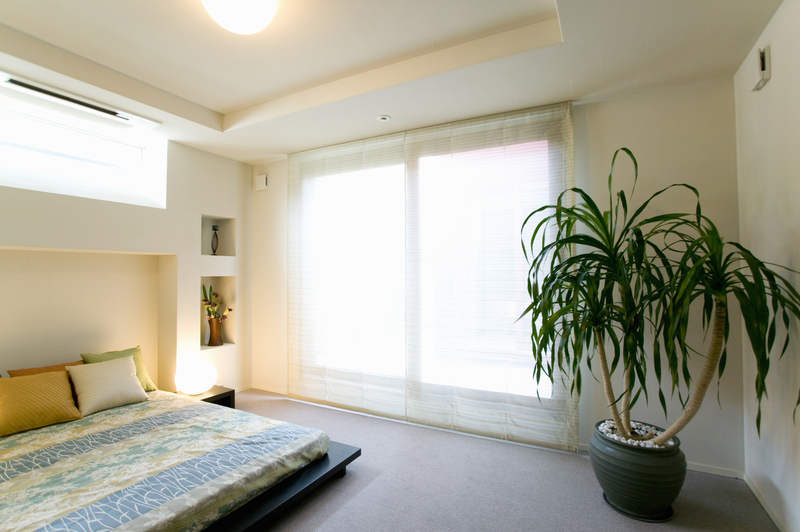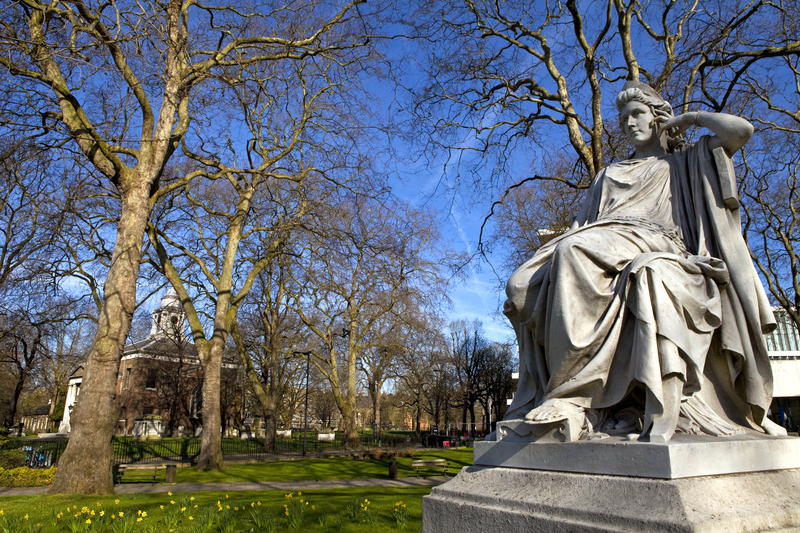Gardening with Dogs: A Guide to Harmonious Coexistence
Posted on 26/08/2025
Gardening with Dogs: A Guide to Harmonious Coexistence
If you're a dog lover and an avid gardener, you may have encountered the challenges of trying to maintain a beautiful outdoor space while keeping your canine companion happy, safe, and entertained. Gardening with dogs doesn't have to result in a yard full of holes, trampled plants, or chewed-up flowers. With a little planning, understanding, and creativity, you can create a garden that's both dog-friendly and aesthetically pleasing. This comprehensive guide explores pet-friendly gardening, offering tips and solutions for harmoniously sharing your green space with your furry friend.
Understanding Your Dog's Behavior in the Garden
Before making changes to your garden or landscaping, it's crucial to observe your dog's natural instincts and behaviors. Dogs experience gardens as exciting playgrounds filled with temptations and fun:
- Digging is instinctive for many breeds; they may dig to bury treasures, cool off, or just have fun.
- Chewing and Exploring--dogs often use their mouth to investigate new smells and textures.
- Running Paths--dogs like to patrol boundaries or chase after intruders (real or imagined).
- Marking Territory--urine spots can lead to lawn discoloration or damaged plants.
By understanding what motivates your dog's garden antics, you can design a dog-friendly yard that satisfies both your gardening dreams and your pet's needs.

Planning a Dog-Friendly Garden Layout
Creating harmony between your gardening passion and your pet means thoughtful planning. Here are the basics of designing your garden for dogs:
Designate Dog Zones
- Paths and Play Areas: Dedicate specific areas where dogs can run, play, and patrol. Consider creating mulched or gravel pathways for easy cleanup and durability.
- Digging Pits: Some dogs love digging. Offer a sand or loose soil pit as an approved spot, and reward your dog for using it.
Raised Beds and Barriers
- Elevated Planters: Protect delicate flowers and veggies with raised beds that are out of reach.
- Fencing and Edging: Use low, decorative fences or sturdy plant borders to separate off-limits garden areas from dog spaces.
Create Shady Retreats
Give your dog a cool place to rest on sunny days. Trees, pergolas, or a dog house nestled among shrubs will provide comfort and shelter.
Choosing Dog-Safe Plants: What to Grow and What to Avoid
Whether you're planting ornamentals, vegetables, or shrubs, safety comes first. Many common garden plants are toxic to dogs, causing reactions from mild stomach upset to severe health emergencies.
Dog-Safe Plants
- Sunflowers
- Marigolds (Calendula)
- Snapdragons
- Rosemary
- Basil
- Coral Bells (Heuchera)
- Zinnias
- Fuchsias
Plants to Avoid
- Sago Palm
- Foxglove
- Azalea
- Daffodils
- Lilies
- Oleander
- Castor Bean
- Autumn Crocus
Always consult your veterinarian for a full list of toxic plants. When in doubt, opt for non-toxic, hardy plants that can withstand some rough-and-tumble play.
Maintaining Healthy Lawns and Surfaces
Lawns can suffer in a garden shared with dogs. Dead patches from urine, muddy tracks, and compacted soil are all common dog owner gardening issues. Here's how to keep your grass green and your hardscaping intact:
- Choose tough grass varieties: Fescue and perennial ryegrass hold up better under paws than delicate species.
- Rinse pee spots: Diluting urine with water as soon as possible can minimize lawn burn.
- Mulch wisely: Avoid cocoa mulch (toxic), instead use bark, cedar, or rubber mulch in dog areas.
- Pave high-traffic zones: Add flagstone, gravel, or pavers where your dog tends to run laps.
Safe Garden Products and Pest Control
Pesticides, fertilizers, and herbicides can pose serious risks to pets. When gardening with dogs in mind, always:
- Go organic: Use natural solutions or pet-safe products whenever possible.
- Read labels carefully: Check for warnings about pet safety on all products.
- Keep chemicals out of reach: Store bags and bottles in locked sheds or cabinets.
- Discourage wild mushroom growth: Remove unknown fungi promptly--some can be deadly to dogs.
Training Your Dog to Respect the Garden
Training is a vital part of harmonious coexistence between dogs and gardens. With consistency and patience, most dogs will learn which areas are for them and which are off-limits.
Setting Boundaries
- Positive reinforcement: Reward your dog with treats and praise for leaving garden beds alone.
- Teach 'Leave It' and 'Stay' commands: Use basic obedience techniques to communicate garden rules.
- Supervise until reliable: Stay with your dog in the yard at first--redirect unwanted behaviors immediately.
Keeping Dogs Busy
- Provide toys, balls, and chews in the garden to offer alternatives to uprooting your prized perennials.
- Rotate garden toys so your dog doesn't get bored.
- Set up agility tunnels or simple obstacles for physical and mental stimulation.
Tips for Managing Common Canine Garden Problems
Even the best-designed pet-friendly gardens may run into some issues. Here's how to address frequent complaints:
Digging
- Offer a legal digging area, and bury favorite toys or treats to encourage use.
- Block access temporarily to areas under repair with garden fencing or netting.
Urine Spots
- Encourage your dog to use a specific potty area lined with gravel or mulch.
- Water down the area after urination to dilute salts and avoid plant damage.
- Some products claim to neutralize urine effects--use cautiously and consult your vet.
Chewing and Eating Plants
- If your dog is persistent, use dog repellents (e.g. citrus or vinegar sprays) on affected plants.
- Avoid unsafe plants altogether and offer plenty of approved chews and treats.
Making Gardening Enjoyable for Both Dogs and People
The ultimate goal of garden coexistence with dogs is to cultivate a space that is enjoyable for everyone. Some gardeners even find joy in sharing gardening activities with their dogs!
- Let your dog "help" with safe tasks, like carrying small garden tools or fetching pots.
- Plant a canine herb patch--parsley, mint, and basil are tasty and safe for dogs to sample.
- Take breaks together under a shaded tree--bring water and healthy treats for you both.
Remember: dogs are part of the family, and the garden should be a place where the whole pack feels at home.
Seasonal Considerations for Dog-Friendly Gardening
Spring and Summer
- Watch for fleas, ticks, and other pests; use pet-safe prevention methods.
- Ensure there's always shade and fresh water available for your dog.
- Keep an eye out for bees, wasps, and thorny plants that might cause injury.
Autumn and Winter
- Pick up fallen leaves, acorns, and mushroom--some are unsafe if ingested.
- Use sand or pet-safe ice melt on paths in icy conditions.
- Create a sheltered spot for your dog so outdoor time stays positive even in cold weather.

Inspiration: Dog-Friendly Garden Design Ideas
- Canine agility course: Build simple hurdles, tunnels, or weaving poles using garden-safe materials.
- Water features: A shallow doggy splash pool or pond with gentle sloping sides doubles as drinking and cooling spot.
- Wildflower patch: Plant dog-safe wildflowers that attract pollinators and provide a sensory experience for your pet.
- Secluded den: Construct a "dog cave" with logs or rocks, shaded by non-toxic shrubs.
Conclusion: Cultivating a Joyful Garden and Happy Dog
Gardening with dogs can be rewarding and enriching for both you and your canine companion. By understanding your dog's needs, planning wisely, and choosing the right plants and products, you can foster a garden that's safe, beautiful, and bursting with life. Remember, a little flexibility and patience go a long way--embrace the uniqueness that your dog brings into your gardening experience. With thoughtful design and practical solutions, coexistence between garden lovers and dogs is not only possible but positively delightful.
Do you have tips for creating a dog-friendly yard or stories of gardening with dogs? Share your ideas in the comments and inspire others to find harmony between their green thumbs and wagging tails!



